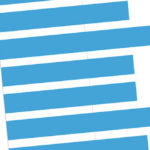There are multiple Java web frameworks available for Java web developers for the design and development of any website application. We all are aware of how the developers can often encourage and empower by more comfortable and faster ways to develop and deploy their Java development services.
Indeed, a Java web framework provides a rapid development and component re-use approach that helps to achieve results. In this article, we will have a list of top java web frameworks and how to stack up among each other. But first, let us begin with some basics.
What is a Web App Framework?
A web application framework also known as web framework is a kind of software framework which is essential for the development of variant web applications like web resources, web APIs and web services. It can alleviate the overhead that is linked to every activity which is performed during web development.
For instance, different web frameworks offer libraries for template frameworks, easy libraries access to database and session administration. The framework promotes reuse of code and may target the development and design of dynamic websites which can also be applied to static websites. Want to learn more about the best Java web frameworks, here’s a list of 5 best Java web frameworks to use in 2019.
#1 JavaServer Faces
The framework is Oracle-supported and hence comes with in-depth complex documentation which you can use to create anything in the Java programming language. This is neither the easiest framework to use nor the speediest. If you use the Integrated Development Environment (IDE) then Java Enterprise EDition can play an important role for building incredibly convenient environments.
❏ Advantages
- Oracle-supported
- FAntastic documentation
- Attractive tools
- Loaded with rich libraries
- Very convenient for IDE’s
❏ Disadvantages
- Little complex
- Requires prior experience
- Slow development
#2 Struts
This framework is a free and open source one which is used to create elegant and aesthetically pleasing Java applications to develop the foundation of a web app to create a pattern known as Model-View-Controller (MVC). There is a bit of less industry standard than JavaServer Faces as it does not have the support of any one of the software industry’s leaders.
Hence, it is a multifaceted framework which takes a while to hang off it to make faster development and testing because of the immediate implementation of new segments of code.
❏ Advantages
- Open-source and Free of cost
- Faster development
- New code can be tested very easily
❏ Disadvantages
- Variant rules
- Little complex framework
- Not flexible
#3 Hibernate
It is not a web framework but an ORM framework which is popularly known for its high-quality and powerful option to deal with your database access. The framework is a device for object-oriented mapping which converts data between the systems that are incompatible and gets them all together to work with each other through object-oriented programming languages.
You can also use hibernate to communicate with any database which you have and also utilize it by making a slight change or two with the overall code of your web application. It is also convenient when you tend to work with multiple databases getting compatible or complex to use.
❏ Advantages
- Strong and Powerful
- Can easily convert data for multiple databases
- Very Speedy
- Easily scalable
- Easy configuration and modification
❏ Disadvantages
- Gets restart slowly
- Easily loses all of your data
#4 Google Web Toolkit
The framework directly comes from the most favorite search engine – Google which is an open source tool that allows you to easily develop and modify front-end java applications no matter how complex your applications are. One good thing about is it is compacted with a lot of support and great documentation which gives this whole feel of well-developed in execution.
You can use this framework to develop those front-end applications that you need to create with these incredibly responsive web applications to balance the load on both the server-side and client-side systems.
❏ Advantages
- Easy to use
- Simple Accessibility
- Helps yo develop very responsive applications
- Balance out the load on the server and client-side systems
- Accurate documentation
❏ Disadvantages
- New versions are being created constantly
- Slow compilation
#5 Vaadin
The framework is an open source and licensed by the Apache software foundation which is a nonprofit organisation that has been working in the creation and sustenance of tools for programming languages like Java and C++. It also has an incredibly active worldwide that you can rely on for guidance.
The framework is great for developing web applications as it possesses server-side architecture thus helping you to create a rich and interactive web interface which enables you to make applications people want to use. You can also extend this framework with Google Web tools as well as with Ajax along with the methods and techniques that are offered by Ajax.
❏ Advantages
- Various Plug-Ins
- Supported by Apache
- Rich Documentation
- Provides loads of support on the Forums
- Utilizes server-side programming
- Create rich and interactive web interfaces
- Use Google web tools and Ajax
❏ Disadvantages
- The code can become overly lengthy and complex
Which One Should You Choose?
Each and every web framework listed here has its own pros and cons and hence before taking into consideration it is the nature of your web app project like how many people are working on it along with the exact purpose behind it.
Along with this, you should also consider your own level of experience with Java and your own understanding of other web frameworks. Now, taking into the considerations about the given parameters you can choose which one works the best for you. Keep Learning!
Author Bio:
Andrew McCallion working as a Java developer at Tatvasoft.co.uk. which provides java development services in London. Besides his profession, Andrew is passionate about writing articles on emerging technologies and innovations in the software industry.






